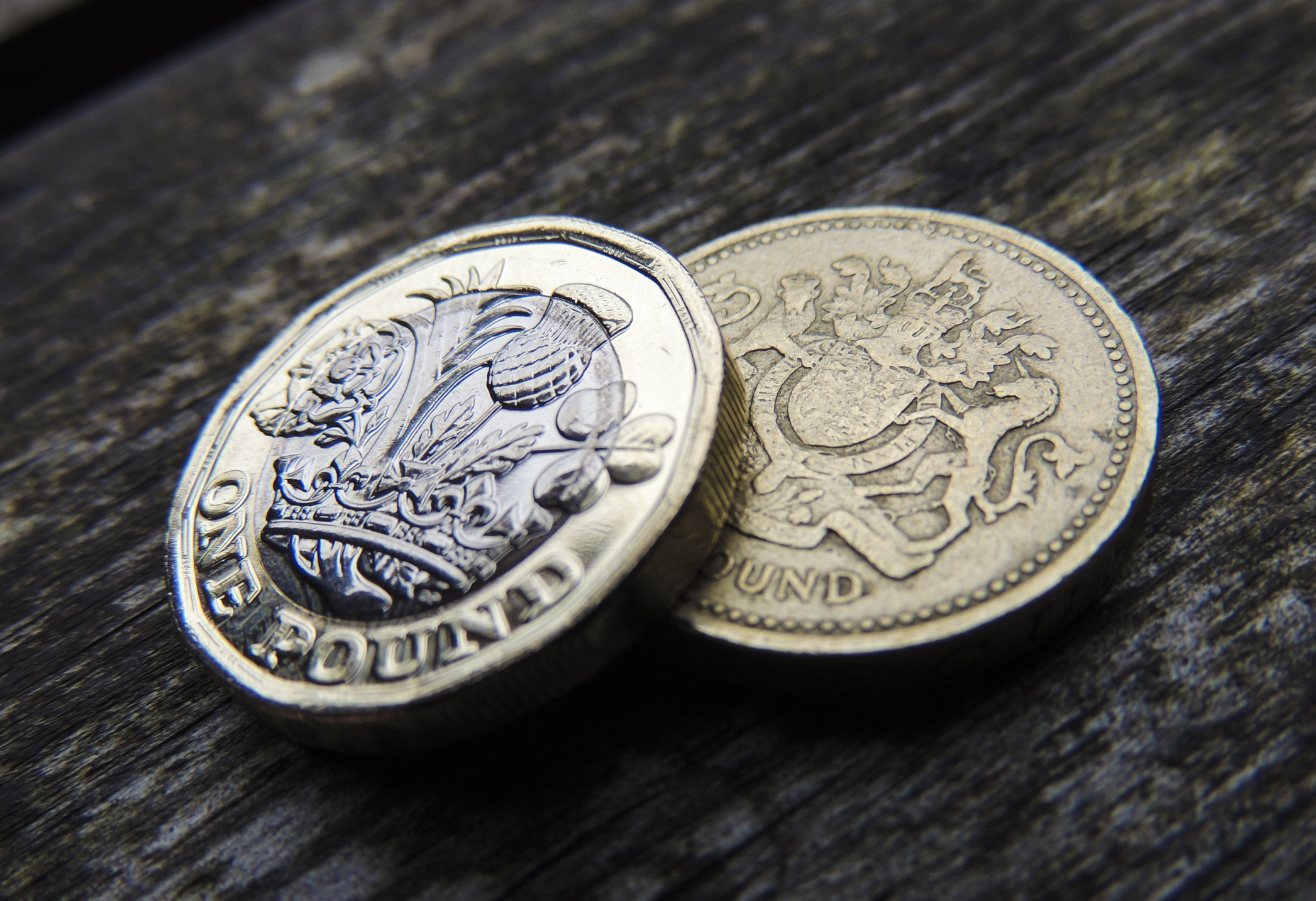The two simple numbers behind successful stock-picking
Stock market investors are right to be wary of magic formulas - the market has more than its fair share of fallen gurus, says Chris Mayer of The Daily Reckoning. But with annualised returns of 40% since 1985, Joel Greenblatt deserves more attention than most. The secret to finding good quality companies at bargain prices boils down to two simple numbers...
In some ways, the average investor is like a man looking for the right combination to get at the riches in a vault. Unlocking the market's treasures - knowing which stocks to buy and sell - is a difficult mystery seemingly beyond his powers.
If there were only a simple and reliable way to find great stocks, a combination to look for or a magic formula of some kind...something the average investor can use and depend on...
One great investor seems to have cracked the code, or at least one of them. In fact, he even calls it his 'magic formula'.
MoneyWeek
Subscribe to MoneyWeek today and get your first six magazine issues absolutely FREE

Sign up to Money Morning
Don't miss the latest investment and personal finances news, market analysis, plus money-saving tips with our free twice-daily newsletter
Don't miss the latest investment and personal finances news, market analysis, plus money-saving tips with our free twice-daily newsletter
You are probably sceptical of anything that smacks of a 'magic formula'. Rightfully so. The stock market has more than its share of snake oil salesmen and shills. Not surprising, given the amount of money at stake.
As someone who loves old books and old ideas, I can tell you the search for a 'magic formula' is as old as investing itself. The reality is investors of all stripes have been tinkering with such ideas for a long time. The goal is to find a simple way to cull through thousands of stocks to arrive at a reasonable number of names that have a high probability of working out.
If you've been reading my letter over the past year, you may remember me writing about Joel Greenblatt before. He's one of my favourites. He is the founder and managing partner of a private investment firm called Gotham Capital. Since its inception in 1985, Gotham, with Greenblatt at the helm, has compiled one of the most astounding track records in the history of investing. He's made annualised returns of 40% since 1985.
That's a truly ridiculous track record. Basically, a $10,000 investment in 1985 comes back as nearly $12 million by the end of 2004!
Greenblatt is one of the all-time greats, even though, strangely, he is not all that well known among casual investors. Certainly, his fame is nowhere near Warren Buffett's or Peter Lynch's. Yet his record speaks for itself. Clearly, here is a man worth listening to.
He's already written a good book on investing entitled 'You Can Be a Stock Market Genius'. Despite its clownish title, this was an important contribution to the investment literature, as it dealt with special situations - such as spinoffs - and showed how and why such investments often worked out. It fleshed out, and brought to a wider audience, a set of strategic options previously known only to Wall Street insiders and certain enthusiasts.
Well, Greenblatt has done it again. This time in a new book titled 'The Little Book That Beats the Market'. In it, Greenblatt divulges his own magic formula - a strategy that has, over the last 17 years, returned 30.8%, versus 12.4% for the S&P500.
The basic goal of Greenblatt's screen is to find good companies at bargain prices. To do that, Greenblatt relies on two basic ideas - concepts used by value- minded investors for decades. And then he gets to the magic formula's two simple ingredients, which are really just two ratios. All of the inputs are readily available on a company's financial statements.
The first is return on invested capital (ROIC) and the second is earnings yield (EY). The first is a measure of quality. When comparing businesses, all other things being equal, the higher the return on invested capital the better. Let's forget about stocks for a minute and just think about a very simple business. Think of invested capital as the amount of money you have to invest in a business. If you own a shop and it requires $10,000 of your own money to open and returns $1,000 to you annually in profits, then you have an ROIC of 10%.
It's probably pretty intuitive that a higher number is better, right? If you made $1,500 annually, your ROIC would be 15%. More return for the same amount of dollars invested. If a friend of yours had to invest $13,000 in his business to get the same $1,500, then his ROIC would be 11.5%. All other things being equal, you've got the better business (15% versus 11.5% ROIC).
So that's the first measure. Greenblatt puts his screen to the thousands of stocks on the market today and ranks them, highest to lowest.
But that's not all. This first test measures quality. We need something else to measure cheapness. We all know Microsoft or Wal-Mart are great businesses, but are they cheap? Just because a business is great doesn't mean its stock price will rise.
That's where earnings yield comes in. The basic idea is to compare what a business earns with what its price is in the market - its 'enterprise value'. Enterprise value is the market cap of the stock less cash plus debt.
Basically, it's how much, in theory, you'd have to pay to buy the whole company at current market prices. Therefore, the higher the earnings yield (EY) the better - you're making more money compared against enterprise value. It means more earnings for your investment dollar.
So this is a more comprehensive price-earnings ratio turned upside down. A business with a 25% earnings yield is like a company with a price-earnings ratio of four (earnings yield = 1/4, or 25%). This is overly simplistic, because in Greenblatt's formula, we're making a number of adjustments to both the 'P' and the 'E' in the price- earnings ratio. But it may help you understand the idea better if you think of it this way. Obviously, a price-earnings ratio of 4 is pretty darn cheap - and that's really what I'm getting at.
Now, Greenblatt's magic formula takes these two ratios - ROIC and EY - and screens thousands of stocks, ranking them from highest to lowest. As Greenblatt writes, 'If you stick to buying good companies (ones that have a high return on capital) and to buying those companies only at bargain prices (at prices that give you a high earnings yield), you can end up systematically buying many of the good companies that crazy Mr Market has decided to literally give away.'
As noted earlier, Greenblatt's magic formula stocks returned 30.8% over the past 17 years, compared with 12.4% for the market. This is a remarkable result. Greenblatt has added yet another tool to the investor's tool kit.
Ideally, formulas of any sort have to make sense intuitively and economically - such as Benjamin Graham's net-nets and Greenblatt's ROIC and EY combination. They are rooted in basic financial ideas that no one will refute. It's not like betting on some odd chart pattern or abstract macro theory. And also ideally, such a formula should be hard to stick with all the time. Otherwise, everyone would use it and the profits would soon disappear.
Graham's net-net idea was like that. Most of the net- nets were troubled companies. Investors hated these companies, which is why they were trading where they were - for less than net current assets minus long-term debt and preferred shares. It goes against human nature to buy such stocks. So people read Graham's idea, they understood it, but they couldn't follow it. Like the tenets of religion...there are just too many temptations and the vast majority of investors will not be able to stay on the righteous path.
It's the same with Greenblatt's formula. A lot of the companies you'll find on his list are not popular names, and indeed, many of them have short-term clouds hanging over their heads. This makes sense, because it explains why they are so cheap. Still, these are tough buys for the average investor.
And it requires patience to stick with Greenblatt's idea, something else the average investor doesn't have a lot of - and that's being charitable.
Graham, too, appreciated the stoic patience sometimes required to make good on cheap shares. In writing about his beloved net-nets, Graham warned readers not to lose patience with them if they didn't immediately rise in price. 'Sometimes, the patience needed may appear quite considerable...'
He related his experience in holding a net-net for three and a half years and making 165% - a 47% annual return. But almost the entire gain occurred in the fourth year.
'Most of the bargain issues in our experience have not taken so long to show good profits,' Graham confided. But the lesson is there.
Again, some patience is required with Greenblatt's magic formula. As Greenblatt readily noted, the magic formula doesn't work every year. There are times when it will lag the market. But this is a good thing, in a way, because such underperformance will tax most investors' patience and they will abandon the formula before it really has a chance to work its magic.
By Chris Mayer for The Daily Reckoning
P.S: If you are interested in finding out more about Greenblatt's magic formula, you can order his new book for a 15% discount at The Daily Reckoning's bookstore:
'The Little Book That Beats the Market'
https://books.global-investor.com/books/22883.htm?ginPtrCode=21664
Chris Mayer is a veteran of the banking industry, specifically in the area of corporate lending. A financial writer since 1998, Mr Mayer's essays have appeared in a wide variety of publications, from the Mises.org Daily Article series to here in The Daily Reckoning. He is the editor of CrisisPoint Trader and Capital and Crisis - formerly the US Fleet Street Letter.
Get the latest financial news, insights and expert analysis from our award-winning MoneyWeek team, to help you understand what really matters when it comes to your finances.
MoneyWeek is written by a team of experienced and award-winning journalists, plus expert columnists. As well as daily digital news and features, MoneyWeek also publishes a weekly magazine, covering investing and personal finance. From share tips, pensions, gold to practical investment tips - we provide a round-up to help you make money and keep it.
-
 ChatGPT turns three: what’s next for the ‘AI era’?
ChatGPT turns three: what’s next for the ‘AI era’?Three years after its launch kickstarted the age of AI, ChatGPT and its maker OpenAI are driving the stock market. But concerns are growing over whether OpenAI will be able to turn its AI dominance into profit.
-
 What to do with old £1 coins
What to do with old £1 coinsThe old one pound coin was demonetised in 2017, but there are still millions out there in the UK. Here’s what to do if you find an old £1.

